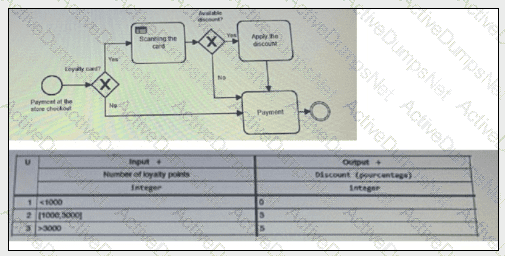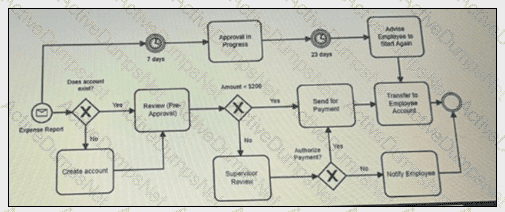iSQI CTFL-AcT ISTQB Certified Tester - Acceptance Testing (CT-AcT) Exam Practice Test
ISTQB Certified Tester - Acceptance Testing (CT-AcT) Questions and Answers
How are beta testing and acceptance testing related?
Which of the following sentences explains BEST how acceptance test cases can be derived from the acceptance criteria
Which one of the following statements BEST explains how the quality of requirements / user stories and acceptance criteria affects acceptance testing?
As a tester you participate in the project of the decision support system for granting a loan. You are asked to review the acceptance criteria for the following requirement:
REQ 3.28. The automated system records critical credit application data (CCAD. needed to support application screening.
Assume that it is well known what kind of data CCAD are. Which of the following would be the BEST example of an acceptance criterion for this requirement?
In Agile an exploratory test session is conducted. Which one of the following concepts applies BEST?
Which one of the following arguments is the BEST reason to add additional information to BPMN diagrams?
The following BPMN and DMN models are used for acceptance testing. The DMN table is linked to the credit card scanning to check if a discount is applicable.
Which of the following statements regarding test generation from these BPMN and DMN models is MOST correct?

Your company wants to establish a new human resources management application. As tester, you propose to use an ATDD approach and to use business process models for test case design.
Which of the following statements is the LEAST meaningful argument for this approach?
A green courier working for an urban delivery service company uses three types of vehicles: normal bicycles, electric cargo bikes and electric vans. The following DMN table provides the rules used to select the type of zero emission vehicle to be used according to the weight (in kg) and the largest dimension (in cm) of the parcel, and the delivery distance (in km)
Which one of the following statements is consistent with this DMN table?

As an acceptance tester you want to test the $100 withdrawal process described by the following BPMN model.

You would like to achieve decision coverage. Consider the following test cases: Test 1: balance = $100, receipt = YES
Test 2: balance = $99
Test 3: balance = $120, receipt = NO Test 4: balance = $2500, receipt = YES
Which of the following is the minimal set of test cases allowing to achieve full decision coverage?
On a project to develop an event booking platform, a review session is being conducted on acceptance test cases written in Ghenkin's language. Consider the following test case:
1. GIVEN I am logged in on the event booking platform
2. AND I have selected an event from the list displayed for the "live concert" category
3. WHEN I click "Buy Tickets" buttom
4. AND I enter "3" into "Ticket quantify" field
5. AND I agree on terms and conditions
6. THEN The system should display the checkout page
7. AND I should provide my personal data for payment and eticket delivery
Which of the following sentences MOST closely corresponds to a comment that could be made on this test case during the review?
Which one of the following combinations of given perspective and statement matches BEST?
Consider the following BPMN model and the related DMN model describing the decision rules associated to the "Check of delivery" activity
What is the minimum number of test cases required to cover all paths without repeated loops in the BPMN model AND all decisions in the DMN table?

As an acceptance tester you are analyzing the following user story for a computer web-based mass multiplayer role-playing game:
As an unregistered player
I want to be able to register myself by defining my e-mail, login and password in a registration form so that I become a registered player
Consider the following propositions of the acceptance criteria:
i.a registration form is displayed on the screen.
ii.the form is written in the Groovy language; the cursor is initially set on the ‘login’ field; after pushing the TAB button the cursor switches to ‘password’, ‘repeat password’, ‘mail’, and ‘repeat mail’ forms.
iii.I cannot register myself if the login I choose is used by another player.
iv.after successful registration process I am informed about it by an e-mail.
Which of the above statements would you consider as well-written acceptance criteria?
Which one of the following scenarios describes BEST a non-functional quality attribute that is relevant for accept testing?
What is considered as good practice regarding business process modeling?
Which one of the following statements regarding performance testing is MOST correct?
Which one of the following statements describes correctly how acceptance testing may be augmented with other test techniques or approaches?
Which one of the following statements regarding the relationship between acceptance testing activities and business analysis activities is true?
Which one of the following statements describes the collaboration between business analysts and testers BEST?
As a part of a travel expense reimbursement management system, the following business process is defined:
• After receipt of the expense report, a new account must be created if the employee does not already have one. The report is then reviewed.
• Amounts less than $200 are automatically approved, while amounts equal to or greater than $200 must be approved by the supervisor. If the request is rejected, the employee is informed. The employee is reimbursed by payment to his of her bank account.
• If the request is not processed within 7 days, the employee receives an "ongoing" e-mail. If the request is not completed within 30 days, then the process is stopped, and the employee receives a cancellation e-mail asking her/him to resubmit the refund request
The following BPMN model has been submitted for review
Which of the following comments is MOST Likely to have been made on this BPMN model?

Which one of the following statements regarding ATDD / BDD is true?
What is a common way to use business process modeling for ATDD?
Which of the following statements regarding defects is MOST correct?
